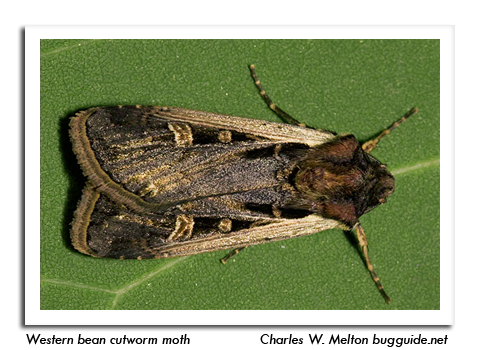
 |
|
|
Looking Ahead
Volume 58 Number 13 Date 08/01/2013 WESTERN BEAN CUTWORM - The annual flight appears to have peaked across southern Wisconsin. The DATCP network of 114 pheromone traps registered 195 moths from July 25-31, a minor increase from the 135 moths reported during the previous week. The state cumulative moth count thus far is only 364. Based on the latest activity, growers can anticipate small larvae appearing in fields for at least two more weeks. Moth flight is expected to subside by mid- to late August at most monitoring sites. SOYBEAN APHID - Densities remain low for this time of year. Only two of 129 soybean fields sampled as part of the annual survey contained economic counts of 300 or more per plant, while the vast majority of sites (88%) had fewer than 25 per plant. Natural enemies are still very active and abundant in most fields and treatment may not be required for many fields this season. As a reminder, foliar treatment should not be considered until the established threshold of 250 aphids per plant on 80% of the plants has been exceeded. CORN EARWORM - Moderate flights of 21-50 moths were registered in Dane, Fond du Lac, Green Lake and Jefferson counties again this week. Counts at nine other reporting locations were less than 17 per trap. Egg deposition on corn silks has intensified and is likely to continue throughout August; therefore, regular scouting and control measures are in order. Sweet corn is susceptible to infestation whenever green silks are present. EUROPEAN CORN BORER - The summer flight of moths continued for the second week. At current temperatures, the majority of moths should appear in traps across the southern half of the state from August 4-16, several days later than last predicted. The treatment window for second generation larvae has opened in advanced areas of the state with the accumulation of 1,550 degree days (base 50°F). SPOTTED WING DROSOPHILA - Flies have been collected in low numbers in Bayfield, Crawford, Dane, Door, Iowa, Trempealeau, Sauk and Vernon counties as of August 1, while larval infestations have been confirmed in Columbia, Rock and Vernon counties. The rapid appearance of SWD adults in the last two weeks suggests the flies originated from a local source and that growers of susceptible small fruits should prepare to implement controls as soon as the flies or larvae are detected. -- Krista Hamilton, DATCP Entomologist 





|
|
|